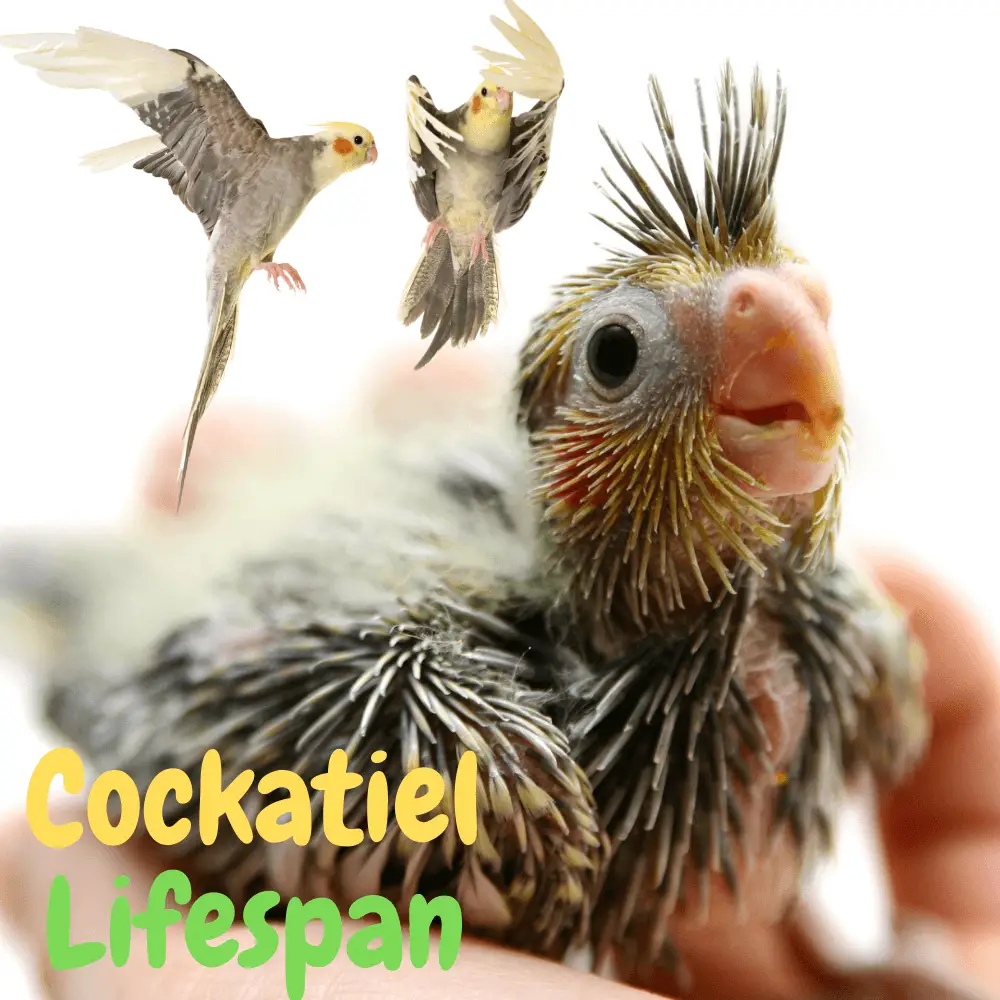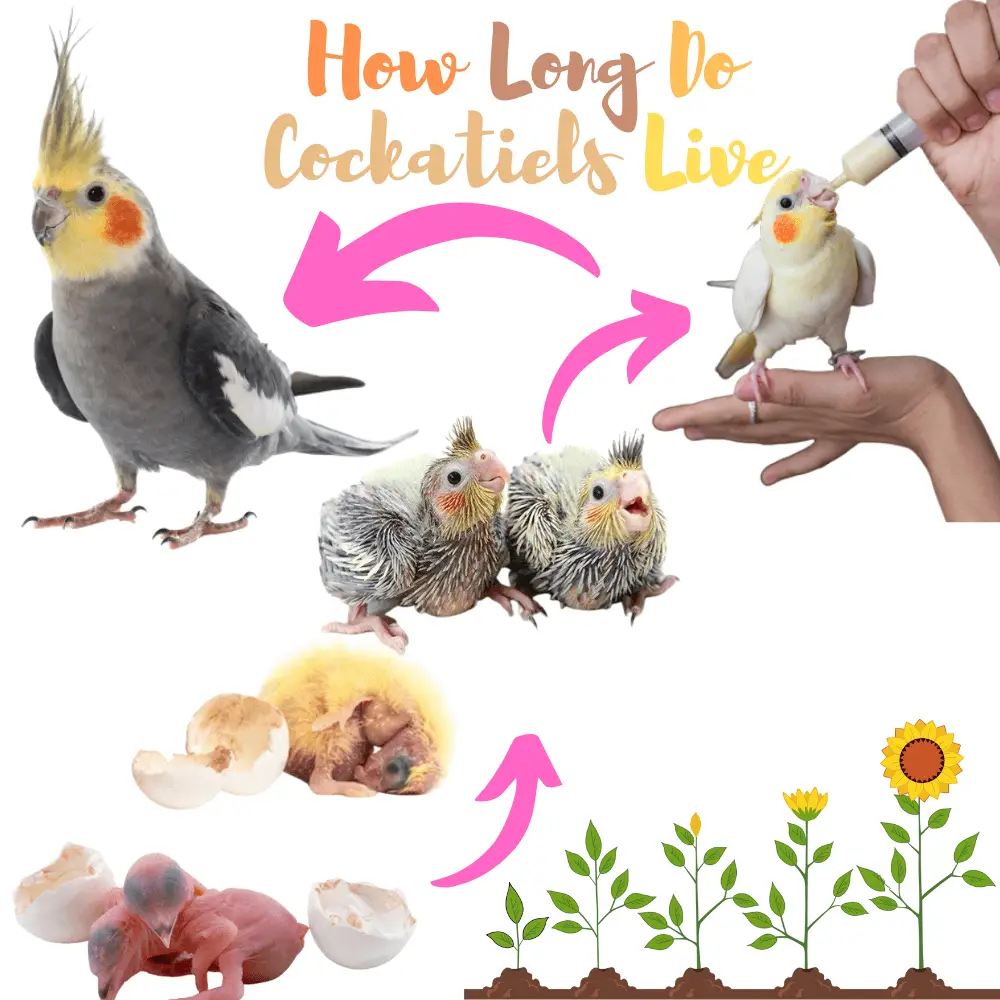
Cockatiel Lifespan: cockatiel’s life span in captivity is generally 16 to 25 years and The lifespan of a cockatiel in the wild is 10-15 years The cockatiel is an animal that lives in groups of about 50 individuals in the wild. It is the only species in the genus Nymphicus. It is much less known than the wavy parakeet. In its natural state, the plumage of the Calpositte varies from dark anthracite grey to black with white spots at the edge of the wings. In males, the hoopoe and head are yellow.
- Good/robust
- Suitable for indoor living
- Suitable for family life
- Sociable with animals
- Easy to maintain/groom
- Intelligent
- Player
- Affectionate
- Calm
- Independent
Origins of the cockatiel
The cockatiel, also called Nymphicus hollandicus or cockatiels, is a parakeet native to the Australian continent. In its natural state, it is found in various perched places, in groups of about 50 individuals, on trees, with the exception of coastal strips that are too wet for its taste. In fact, it is the only species in the genus Nymphicus.
It is much less known than the wavy parakeet, but after many mutations, we can find very interesting varieties in pet stores. Although very endearing, the popularity of the cockatiel was much later than that of most other breeds, probably because of its tendency to be very noisy.
Physical characteristics
Weight and size
Weight: 80 to 90 g (females), 90 to 110 g (males)
Size: 30 to 35 cm long for males and females, with a tolerance of 1 cm plus or minus
Plumage
In its natural state, the plumage of the cockatiel varies from dark anthracite grey to black with white spots at the edge of the wings. In males, the hoopoe and head are yellow. The latter is decorated with red spots on the cheeks. In females, there is no yellow mask, but streaks under the tail as well as yellow dots under the wings. When young, the plumage of young cockatiels is similar to that of females.
Overall appearance
This bird, as large as a pigeon, has a strong resemblance to the cockatoo, but it differs from it by its morphology. Its body is much more tapered and its tail is long and tapered. Despite its small size, it is indeed a species of parrot.
These small parrots are distinguished from others by their erectile hoopoe (small crest composed of long feathers on the head) that bristles or flattens according to their moods.
Cockatiel lifespan

The character of the cockatiel
The character of the animal
Naturally playful and affectionate, the cockatiel is also a talented whistler who can even learn to say a few words. Although calm in appearance, it can regularly be subject to bouts of cheerfulness and offer you a real comic and charming number. Very sociable, she has no difficulty getting along with other congeners whose company is essential to her well-being.
These little parrots are endowed with great emotional intelligence that allows them to easily be understood. Do not be surprised to see your cockatiel ask for a caress by lowering his head or make a real statement through a melody that he will whistle in the hollow of your ears, putting all his heart into it. As you can see, it is a domestic bird that is easy to tame.
Cockatiel Health
Life expectancy
Cockatiel lifespan:The life expectancy of the Cockatiel varies on average between 15 and 20 years. When she evolves in a very good quality environment, she can sometimes even live up to 30 years.
Common health problems
The Cockatiel is a large, very hardy bird, which when living in an environment adapted to its needs, only very rarely gets sick. However, to avoid candidiasis and nematode infections, it is recommended to set up an annual visit to the veterinarian.
While most parrot species are prone to developing behavioral disorders, the cockatiel seems to be safe from this real scourge.
Finally, her legs and lungs are very sensitive and to prevent her from catching Acariosis, it will be necessary to rigorously clean her cage. When this pathology is not properly treated, it can lead to the death of the animal.
Cockatiel lifespan

Maintenance of the Cockatiel
Lifestyle
Ideally, the cockatiel should live, when in captivity, in a large rectangular parakeet cage leaning against a wall in a living room well insulated, bright, and away from drafts (the ideal temperature is between 20 ° and 25 ° C).
As with most birds, it is advisable to avoid an office or bedroom, unless you spend a lot of time there. Indeed, this bird is very curious and he likes to see what is happening in his family. If possible, train her from an early age to walk on your shoulder like a cockatoo or on the floor, while teaching her to respect your interior.
Care and grooming
The pruning of claws is necessary at the rate of two to four times a year, taking into account the fact that the bird does not have the opportunity to wear them as it could do in the wild.
In addition, beak size is also recommended in some specimens. As this is a complex procedure, do not hesitate to seek the advice of a veterinarian or an experienced person before performing this operation.
Finally, if you do not let your bird fly, it will also be necessary to proceed to the pruning of its feathers.
These small, highly sociable birds are easier to raise than larger ones. In adulthood, it reaches an average size of 30 cm. The cockatiel parakeet has an excellent popularity rating since it has good character traits and a good temperament. And, bonus, she enjoys the company of humans. Its life expectancy as a pet bird can exceed ten years (generally, between 10 and 20 years) which is very interesting in itself.
The cockatiel parakeet (Nymphycus hollandicus), commonly known as cockatiel in English, is native to Australia. There, in the wild, these small parrots are found on almost the entire continent, except for the humid coastal regions. This is a parrot of the cockatoo family. This family of parrots is recognized by the presence of an erectile hoopoe, long feathers above the head, which the bird can raise straight or flatten, depending on its moods. This is definitely part of its charm!
The standard color of the cockatiel parakeet is gray, and some parts of the body (forehead, head, erectile hoopoe, cheeks, and throat) are yellow. The feathers that are near the ears are orange-red. It makes him feel like he has red on his cheeks! Of course, there is a multitude of mutations available at the color level such as lutino, cinnamon, and variegated.
Cockatiel lifespan

Outstanding personality
Small psittacine par excellence, it makes an excellent pet bird. Funny and affectionate, he is known to adapt easily to all lifestyles. For Johanne Vaillancourt, of the Centre aviary Johanne Vaillancourt, it’s a good compromise between a small bird and a larger parrot. Among parrots, it is always the first on the list for the funniest species!
He is very easy to tame and can even learn to say a few words and whistle a few songs. It should be noted, however, that he is generally a better whistler than a talker… It is not uncommon to see him dancing and whistling a melody that he loves and has heard many times!
In the wild, these birds live in very large groups. So they are social animals. Your new companion will need your company and time. You should at least spend a minimum of one hour a day with your bird doing activities with it, bathing it, training it, flying it, etc.
Many birds develop serious behavioral problems when they are left alone too often on their own and do not have enough mental stimulation. If you’re not home often, it’s best not to have one at all or have at least two. At this time, it is better if they are put in the presence of one and the other at a young age.
A responsibility
Don’t succumb too quickly to the urge to get a pet bird! First, ask yourself if you will be able to meet the physical and psychological needs of this bird for the next 10 to 20 years. Also ask yourself if you will be able to pay for a spacious cage, varied and quality food, toys, and visits to the vet. And finally, ask yourself if you will have quality time to devote to him every day of his life and if you will devote time to learn about all the care you need to take to make his life in captivity a quality one!
Cockatiels Can Live Up To 36 years?
SOURCE: ParrotNest




















